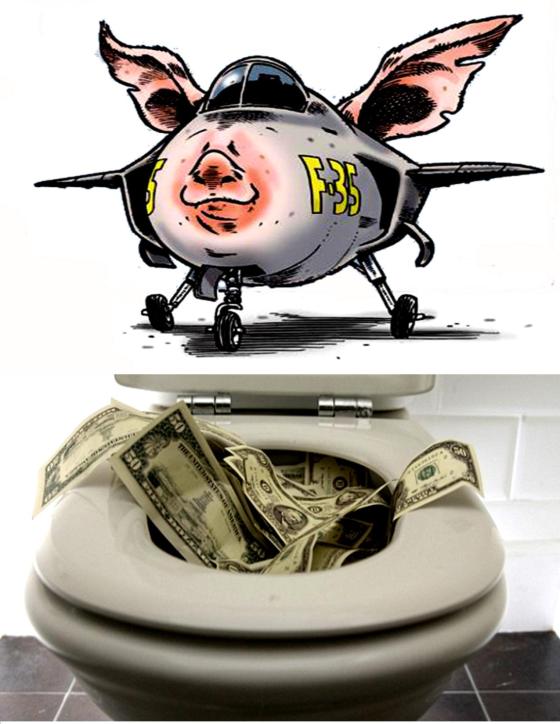Buy 460 More F-35 Fighters Before Combat Testing Even Begins? |

“THE CIPHER BRIEF”
“Proponents argue that this will result in savings.
Taxpayers will be on the hook for even greater costs, a scenario that is all risk with little chance of reward.
The F-35 Joint Strike Fighter was supposed to be an affordable plane for the Air Force, Marine Corps, and Navy. Instead, it has become the ultimate case study of the Pentagon’s failed acquisition system—it is years behind schedule and nearly double the initial cost estimates.
The desire to create a common plane for three different services and multiple missions virtually guaranteed the program would be a boondoggle even before the first engineer sat down at the drafting table. The services need different things from a plane. Attempting to incorporate all of them into a common airframe means engineers have to make design compromises that will affect performance. The best example of this is the Marine Corps’ requirement for a plane that can take off and land vertically. To do this, the Marine Corps’ F-35s have a large lift fan in the center of the plane. The other services don’t have this fan, but the space for it is still there in the common airframe. This adds a great deal of weight, making all of the planes less maneuverable. When you add up all the other requirements for multiple services to perform multiple missions in multiple countries, the result is the ultimate “jack of all trades, master of none” airplane.
To make matters worse, the Pentagon is rushing into production before development is even finished. Just as you would never buy a car that hadn’t been crash-tested, the Pentagon shouldn’t buy its planes before it knows they can fly. Yet it’s buying hundreds of them before they’ve been tested in a combat-realistic environment. This is called “concurrency,” and the F-35 program is the most concurrent program in U.S. history.
Accelerating production does facilitate “politically engineering” the program by spreading contracts and jobs across congressional districts. Forty-six states have a stake in the program, making it “too big to fail.” Defense contractors and their advocates argue concurrency will save money, but reality is something else entirely.
The Government Accountability Office estimates the F-35’s concurrency will cost $1.7 billion to “rework and retrofit aircraft with design changes needed as a result of test discoveries.” As planes continue to roll off the production line before testing has revealed all the design defects—much less figured out their fixes—those costs will likely increase dramatically. This is such a big problem that the Pentagon’s testing office is worried the Pentagon might not be able to afford to fix many of the planes. This would mean the services would be stuck with potentially hundreds of planes that can’t be used in combat, but instead would gather dust and serve as expensive sources of spare parts.
Far too often, program officials have chosen an overly-complex and expensive feature when a simpler and far less expensive design would have worked. Consider the F-35’s helmet. It projects video and infrared images of the world around the pilot, including threat information and flight instrument readout. It is customized to the pilot and costs $600,000 each.Unfortunately, the resolution of the projected video on the pilot’s visor is significantly poorer than the flat panel screen displays used on current A-10s and F-15s. The Pentagon is now on its third version of the helmet, and testing has found stability problems and “green glow” that inhibits visibility. Testing has also found that intense shaking during flight maneuvers makes it difficult for the pilot to see the display, which could significantly degrade a pilot’s situational awareness and reduce chances of surviving the fight.
A helmet costing more than a house is even more absurd when you consider the problem the engineers were trying to solve. To be effective in combat, pilots need to be able to see what is going on in the sky around them. F-35 designers could have positioned the pilot higher in the aircraft with a clear canopy to provide them with a better view. Lockheed Martin did that with the F-22. But for the F-35, they created a complicated camera system to display images in the pilot’s helmet. One F-35 pilot confirmed that a camera could not replicate the ability to judge aspect and distance closure the way he could by just looking for himself. “I’ll use my eyes,” he said. “I need to see things with my own eyes.”
Now that the services are starting to declare the planes “ready for combat”—a dubious declaration if there ever was one—many F-35 defenders are confidently asserting that the troubled program has turned a corner. But don’t be fooled. The F-35 is only beginning to face the most complex technological challenges, including integrating weapons, fusing data, and testing against a full range of enemy defenses. Declaring victory at this point is like claiming your team won the Super Bowl after winning a training camp scrimmage.”
https://www.thecipherbrief.com/article/lessons-be-learned-1091
